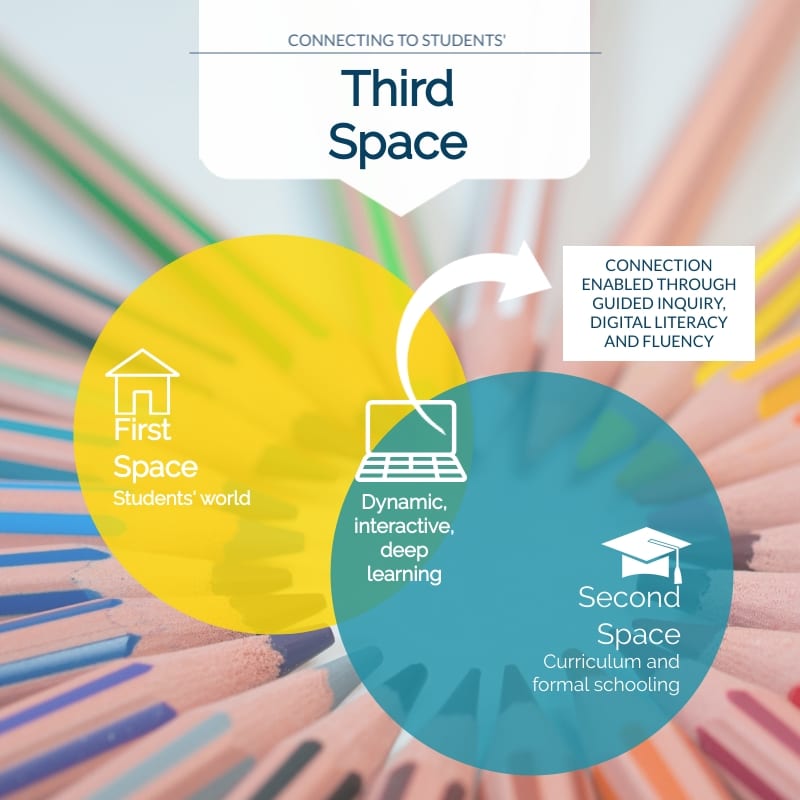Digital literacy must be embedded across the curriculum to enhance student participation in learning and garner outcomes that will support their current and future learning endeavours. Embedded digital literacy, and to the next level digital fluency, encourages teachers to consider how technology will be used to enhance learning, and encourages students to apply their pre-existing digital knowledge to new and novel learning experiences (Hague & Payton, 2010). To effectively embed these practices, teachers can use a model such as Kuhlthau’s Guided Inquiry Design (Kuhlthau, Caspari, & Maniotes, 2015) or Stripling’s (2010) Model of Inquiry, which require students to practice core digital literacy skills while promoting third space interactions.
Tapping into available technologies and connecting to students’ third space enables constructivist learning that is holistic (cross-curricular), situated and authentic, and inquiry-based where students are active producers and evaluators. These experiences enable students to develop crucial 21st century skills that are required to effectively adapt to changing environments. This combination of declarative, procedural and critical skills enhances higher-order thinking and acquisition of deep understanding (Wheeler & Gerver, 2015). Embedded digital literacy practices through student-centred learning experiences are also likely to strengthen students’ digital fluency, as these experiences require students to use digital technologies strategically to communicate, connect, collaborate, consume, produce, share, evaluate, model and manage (Couros, 2012).

References
Couros, A. (2012, January 18). Towards digital fluency [Slideshow]. Retrieved from http://www.slideshare.net/courosa/towards-digital-fluency.
Kuhlthau, C. C., Caspari, A. K., & Maniotes, L. K. (2015). Guided Inquiry: Learning in the 21st Century (2nd Ed.). Santa Barbara, California: Libraries Unlimited. Retrieved from EBSCOHost
Stripling, B. (2010). Teaching students to think in the digital environment: Digital literacy and digital inquiry. School Library Monthly, 26(8), 16-19. Retrieved from https://search-proquest-com.ezproxy.csu.edu.au
Wheeler, S., & Gerver, R. (2015). Learning with ‘e’s: Educational theory and practice in the digital age. Retrieved from ProQuest Ebook Central.
[Reflection: Module 2.2]